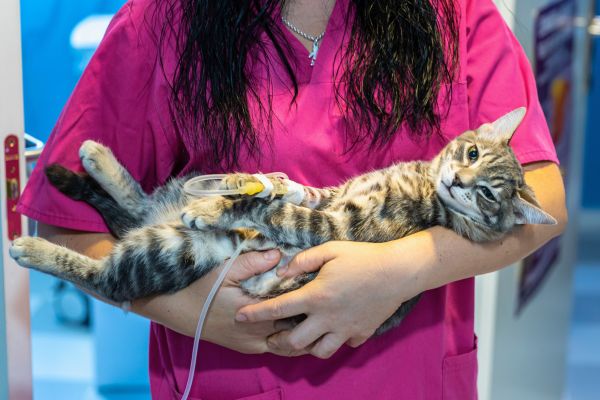Deconstructing myths about euthanasia

Myths die hard when it comes to shelter euthanasia. However, the field of animal welfare has greatly evolved in recent decades, enabling many shelters, including the SPCA de l'Outaouais, to greatly reduce their euthanasia rates - excellent news! If this medical procedure is still relevant today, it's mainly due to circumstances beyond our control and in specific situations.
Before going any further, we'd like to dispel a persistent myth: no animal is euthanized because it has been at the shelter "too long". Animals stay at the shelter as long as they need to be adopted!
Here are the five circumstances in which we must perform euthanasia.
- Humanitarian euthanasia
Sometimes an animal arrives at the shelter in such poor condition (badly injured, old and sick, etc.) that the most compassionate solution is to carry out a humanitarian euthanasia.
In making this decision, our health team takes into account the animal's well-being, comfort level and an assessment of its quality of life following care. If there's a likelihood that the animal won't be well in the long term following treatment, we take the difficult but necessary decision.
- Behavioral euthanasia
The SPCA de l'Outaouais is not equipped to provide long-term care for animals with aggression problems. For this reason, we try to suggest alternatives in such cases so that real behavioral work can be done, which is not possible in the shelter environment. While we may not be in the best position to help the animal, we do try to help people in their particular situations.
Every dog that comes into the shelter is assessed by our canine behavior team. If we judge that a dog presents a risk of danger, we then have it assessed by certain partners who are better equipped for this type of case. Only as a last resort, when all other options have been exhausted, do we proceed with behavioral euthanasia.
As far as cats are concerned, we prefer the "Capture-Sterilize-Release " method for colony cats, which are usually wilder or more ferocious. Should a very aggressive cat end up at the shelter, we will once again try to assess the options available to ensure that it finds itself in a suitable environment. Euthanasia remains a last resort.
- Contagion euthanasia
We offer our boarders a quality of life that enables them to be healthy during their stay at the shelter. We have numerous protocols in place to reduce the likelihood of animals falling ill, and minimize the risk of contagion should it occur.
If an animal arrives at the shelter with a serious, highly contagious disease that may pose a health risk to other animals and/or shelter staff, only then will we consider contagious euthanasia based on our risk assessment.
- Cost euthanasia
As a charitable organization, we obviously have limited resources. If an animal requires care that is too costly, we will try to find a partner who may be able to take it in. If such a transfer is impossible, we will consider euthanasia.
- Overpopulation euthanasia
This is THE type of euthanasia we try to avoid at all costs. Much less frequent than in the past, these euthanasias occur during periods of overpopulation, when we are no longer able to take in so many animals with medical or behavioral problems that require a great deal of attention, time and resources.
Our limitations on space and resources restrict the number of animals we can take in at the shelter. Our foster family program, in which animals are taken into their homes, is a key element in enabling us to help more animals!
If we've exhausted all our options and run out of resources, then we're forced to proceed with this difficult practice.
To prevent this type of situation, we have set up appointment procedures for animal arrivals. When these procedures are respected, we can calculate the number of entries so that we always have a cage available for the animal entrusted to us!
About euthanasia-free shelters
Some shelters declare themselves "non-essential euthanasia-free", which is essentially the SPCA de l'Outaouais’ philosophy. If we sometimes carry out "non-essential" euthanasia, it's for reasons beyond our control, such as an unplanned influx of cats.
In fact, our contracts with certain municipalities in the Outaouais region sometimes force us to take in large numbers of animals very quickly, for reasons of legislation and animal welfare. Some of these animals may be in very poor condition, which can result in humanitarian euthanasia.
The best way to help us is to respect our procedures, so that we can manage the influx of animals arriving at the shelter!
How do we carry out euthanasia?
We use the injection method, which is quick and painless for the animal. The procedure is carried out with compassion by our team dedicated to animal welfare.
We hope this helps you understand our reality and how we make decisions about animal welfare! The entire shelter team is guided by the importance of the shelter's mission and is keen to save as many animals as possible.


